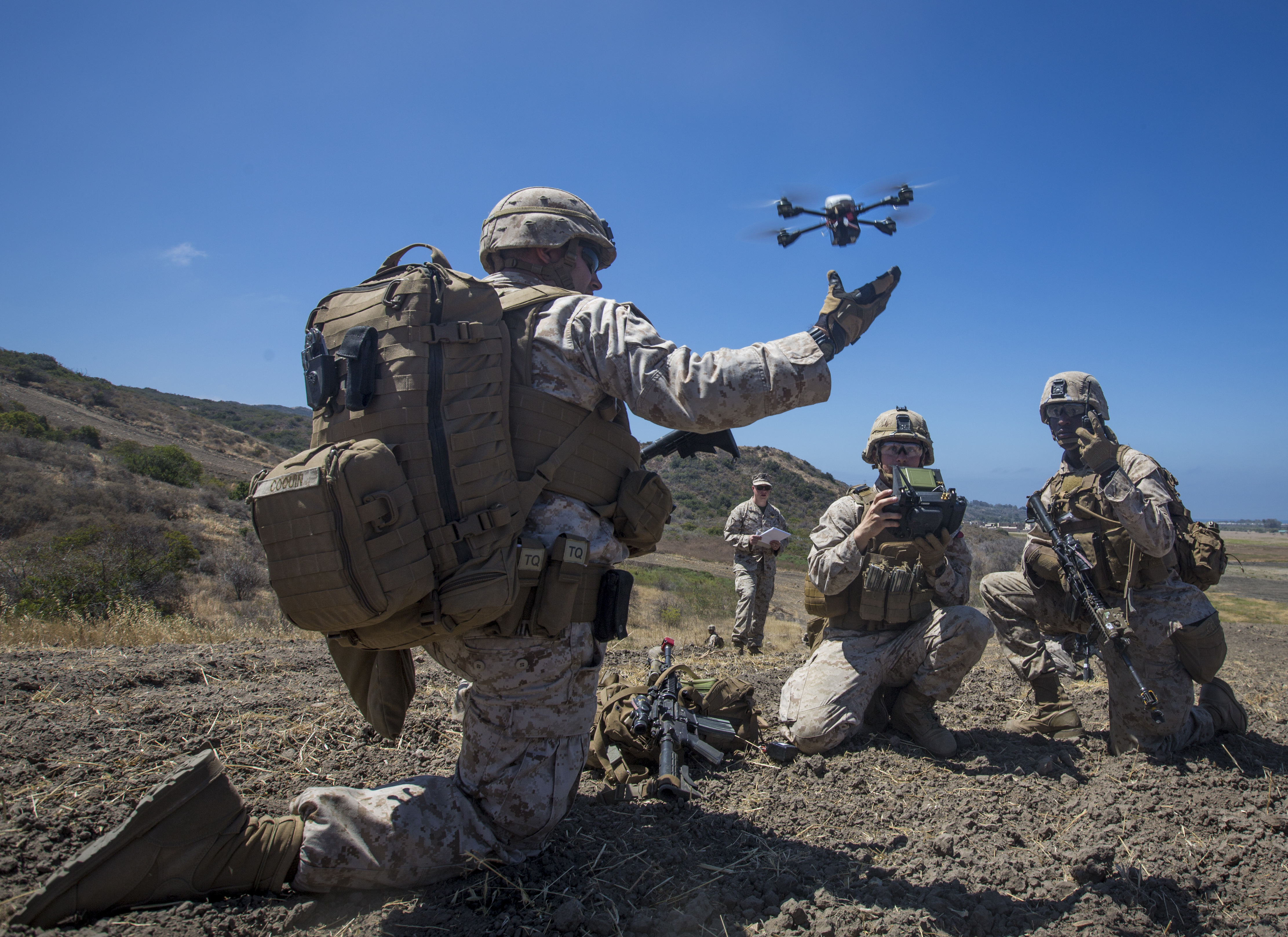
USNI News polled its writers, naval analysts and service members on what they consider the most important military and maritime stories in 2016.
With the Navy releasing a “Design for Maintaining Maritime Superiority” and the Marines releasing a Marine Corps Operational Concept in 2016 that both call for high-end technologies to succeed in a contested maritime environment, Marine Corps acquisition this year was focused on increasing lethality, situational awareness and maneuverability for the force.
The service began a major effort to develop a large Group 5 unmanned aerial system (UAS) that would operate from an amphibious ship and provide long-range, long-endurance capabilities for the Marine Air-Ground Task Force (MAGTF). The Marine Corps wanted an organic unmanned capability that could go in with the Marines in the early stages of a contingency, rather than Marines waiting for joint forces to arrive with their unmanned systems. The MAGTF UAS Expeditionary (MUX) program would provide MAGTF C4 (Command, Control, Communications and Computing with Spectrum Agile Data Routing); early warning; persistent fires; escort; electronic warfare; reconnaissance, intelligence, surveillance and target acquisition (RISTA); and tactical distribution.
On a smaller scale, the Marines – through the Marine Corps Force 2025 effort that looks at restructuring the force to meet current and future needs such as cyber and electronic warfare, and the Sea Dragon 2025 experimentation effort to test out new concepts and technologies – have looked at many ways to use smaller unmanned aerial vehicles (UAVs). At the MAGTF Integrated Experiment (MIX) 2016, ground robots intended to help carry Marine gear on foot patrols were also used for reconnaissance, sensing and locating enemies over a ridge line based on radio frequency signatures, and then lasing and firing guided weapons at enemy targets as needed. The experiment also tested launching Lethal Miniature Aerial Munitions Systems from vehicles such as the Light Armored Vehicle (LAV), which often push forward first and in a dispersed manner and could use these small UAVs to further extend the Marines’ range forward. And the Marines at MIX 16 looked at using the F-35B Joint Strike Fighter’s sensors and command and control capability to control UAVs.
On the logistics side, the Marine Corps is considering a number of ways that UAVs of varying sizes could resupply Marine forces dispersed in remote areas, dangerous areas and others where traditional truck convoys are not the best way to deliver spare parts, ammunition and other goods.
Defensively, the Marine Corps is looking at operating in an environment with enemy drones that can watch or even shoot at Marines. Commandant of the Marine Corps Gen. Robert Neller said the service will increasingly include drones in force-on-force training, giving the opposing forces the freedom to use drones in whatever innovative ways it can and forcing Marines to adjust as needed. The service also said it would pair a laser weapon with its Stinger missile system to provide a more flexible and cost-effective way for ground vehicles to defend themselves against enemy UAVs of all sizes.
On manned aviation, the Marine Corps said it intended to put the Harvest Hawk package of sensors and precision-strike weapons onto its entire fleet of KC-130J Super Hercules tanker/transport planes and MV-22 Ospreys.

In late 2015 the Marine Corps awarded Amphibious Combat Vehicle 1.1 engineering and manufacturing development contracts to BAE Systems and SAIC, and General Dynamics protested the award shortly afterward. Service officials later said the protest delay had a “minimal” impact on the program schedule, but a similar protest on the Joint Light Tactical Vehicle program – where the Army and Marine Corps awarded Oshkosh Defense a low-rate initial production contract and Lockheed Martin protested – spiraled into a year-plus delay in achieving initial operational capability. As a result, Neller said the Fiscal Year 2017 budget request took some funding from the JLTV program, already delayed, and used it to protect the ACV and the Ground/Air Task Oriented Radar acquisition programs from cuts and therefore delays. BAE Systems delivered its first ACVs to the Marine Corps this fall, and government testing is set to begin in the spring.
As the ACV program moves forward, SAIC is also performing survivability upgrades on 396 of the Marines’ 1,058 Amphibious Assault Vehicles, improving the 40-year-old vehicles to last another 20 through blast protection, improved propulsion systems and more. The first of the AAV-Survivability Upgrade vehicles delivered in March.





